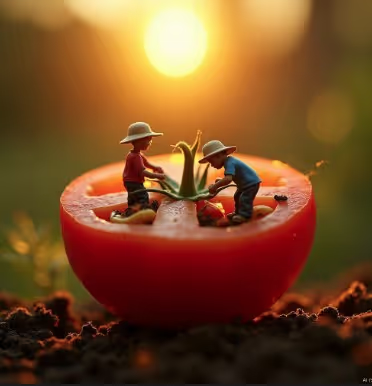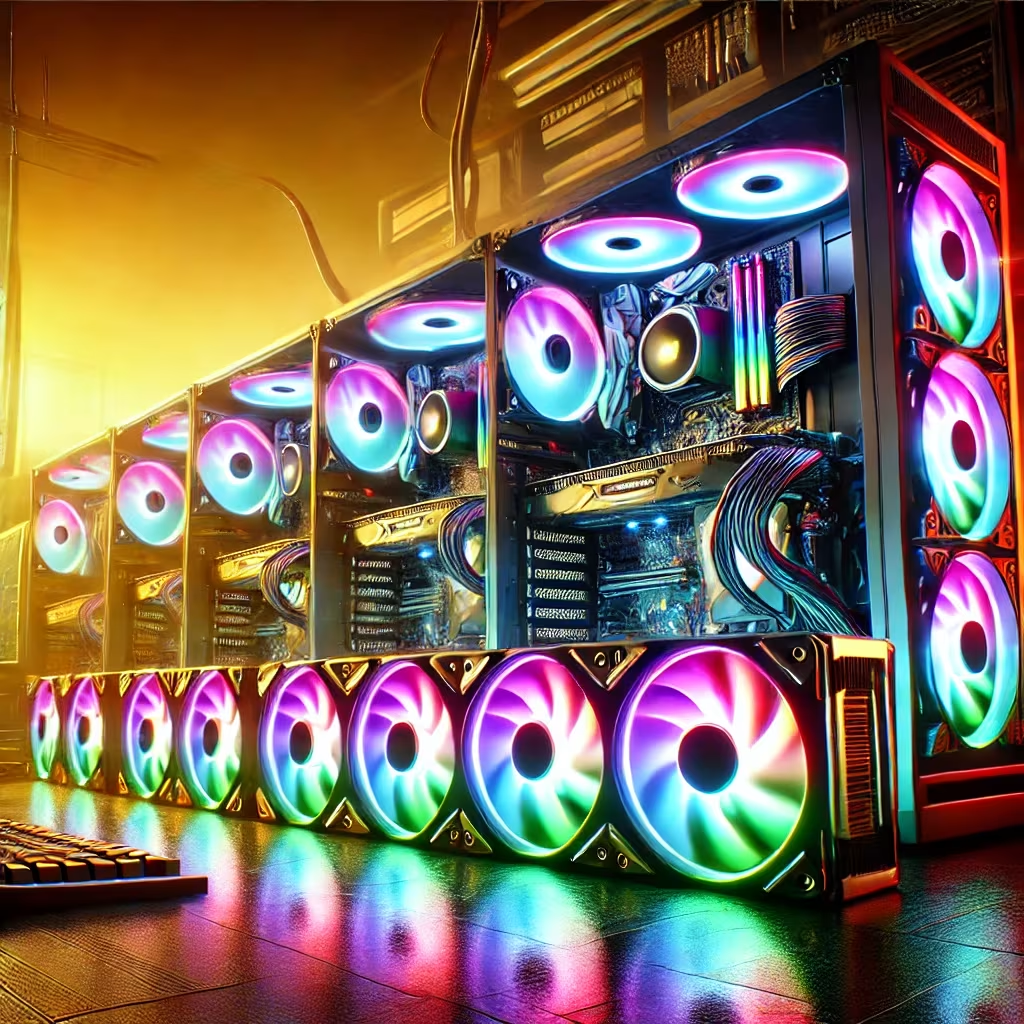
Gilgen Textbox Workflow Guide for Promptus

What is GLIGEN?
GLIGEN (Grounded Language-to-Image Generation) is an advanced AI model that extends traditional text-to-image generation by adding precise spatial control. Instead of just describing what you want in your image, GLIGEN lets you specify exactly where objects should appear using bounding boxes.
Key Benefits:
- Precise Object Placement: Control exactly where elements appear in your image
- Multiple Object Control: Position several different objects simultaneously
- Enhanced Creative Control: Move beyond basic text prompts to detailed spatial composition
Who Created GLIGEN?
GLIGEN was developed by researchers and engineers from:
- University of Wisconsin-Madison
- Columbia University
- Microsoft
The model builds upon existing diffusion models like Stable Diffusion while adding groundbreaking spatial conditioning capabilities.
How GLIGEN Works
Core Concept
GLIGEN works by combining two types of input:
- Text Prompts - Describe what you want to generate
- Bounding Boxes - Define where specific objects should be placed
The model uses a frozen CLIP text encoder and injects spatial information through special trainable layers, preserving the vast knowledge of pre-trained models while adding precise control.
Coordinate System
- Origin Point: Top-left corner (0,0)
- X-axis: Increases moving right
- Y-axis: Increases moving down
- Units: Pixel coordinates
Using GLIGEN in Promptus CosyFlows
What is CosyFlows?
CosyFlows is Promptus's user-friendly interface that makes ComfyUI accessible to non-technical users through:
- Drag-and-drop workflow building
- Visual feedback and previews
- Pre-built templates
- Zero-code approach
Step-by-Step Workflow
1. Set Up Your Base Workflow
- Start with a standard text-to-image workflow in CosyFlows
- Include your basic components: model loader, text prompt, sampler, VAE decoder
2. Add the (cosy) GLIGEN Textbox Node
- Drag the GLIGEN Textbox Apply node into your workflow
- This is Promptus's user-friendly version of the standard GLIGEN node
3. Configure Your Main Prompt
- Write your complete image description as you normally would
- Example: "A serene beach scene with a red umbrella, a golden retriever, and a sailing boat"
4. Set Up Spatial Controls
For each object you want to position precisely:
Input Fields:
- Text: The specific object name (must match something in your main prompt)
- Width: How wide the bounding box should be (in pixels)
- Height: How tall the bounding box should be (in pixels)
- X Position: Horizontal position from left edge
- Y Position: Vertical position from top edge
Example Configuration:
Object 1: "red umbrella"
- Width: 200, Height: 300
- X: 100, Y: 50
Object 2: "golden retriever"
- Width: 250, Height: 200
- X: 400, Y: 300
Object 3: "sailing boat"
- Width: 300, Height: 150
- X: 600, Y: 100
5. Connect the Nodes
- Connect your CLIP model to the GLIGEN node
- Connect the GLIGEN model to the workflow
- Link the conditioning output to your sampler
6. Generate and Iterate
- Run the workflow to see your spatially-controlled generation
- Adjust bounding boxes as needed for better composition
- Use the "Remix" feature to generate variations
Best Practices
Prompt Writing
- Be Specific: Use clear, descriptive object names
- Match References: Ensure GLIGEN text exactly matches objects in your main prompt
- Avoid Overlap: Try not to place bounding boxes directly on top of each other
Bounding Box Sizing
- Proportional Sizing: Make boxes appropriate for the object size
- Leave Breathing Room: Don't make boxes too tight around objects
- Consider Context: Account for how objects interact with the background
Workflow Optimization
- Start Simple: Begin with 1-2 objects, then add more
- Use Templates: Leverage Promptus's pre-built GLIGEN workflows
- Save Successful Setups: Create reusable workflows for common compositions
Troubleshooting Tips
Objects Not Appearing in the Right Place:
- Check that your text exactly matches the main prompt
- Verify coordinate values are within image boundaries
- Try larger bounding boxes
Poor Quality Results:
- Ensure your base prompt is well-written
- Check that the GLIGEN model is properly loaded
- Adjust sampling settings if needed
Objects Bleeding Outside Boxes:
- Increase the strength of spatial conditioning
- Use more specific object descriptions
- Try adjusting the guidance scale
Advanced Techniques
Multiple GLIGEN Nodes
- Chain multiple GLIGEN Textbox nodes for complex scenes
- Each node can control different objects independently
- Build up compositions layer by layer
Combining with Other Nodes
- Use with ControlNet for additional guidance
- Combine with inpainting for refined results
- Integrate with style transfer nodes
Batch Generation
- Use Promptus's batch features to generate multiple variations
- Test different spatial arrangements quickly
- Create lookbooks or style guides efficiently
Getting Started on Promptus
- Sign up at promptus.ai
- Browse the Gallery for GLIGEN workflow templates
- Fork a Template or create a new CosyFlow
- Experiment with the (cosy) GLIGEN Textbox node
- Share and Remix your successful workflows with the community
Conclusion
GLIGEN in Promptus CosyFlows democratizes advanced spatial control in AI image generation. Whether you're a designer creating precise layouts, an artist exploring composition, or a marketer needing consistent product placement, GLIGEN provides the tools to transform your creative vision into reality with unprecedented control and ease.
Reviews
What our community is saying about us

Dale Steward
Illustrator
Promptus Cosyflow interface works like magic - we didn’t even know we needed.

Dmitry Selivanov
Art director
We’ve been recommending Promptus to everyone we know who’s interested in starting in AI art design.

Sadiya Abdullah
Brand agency
Promptus saved me hours of fiddling with setup. It just works. I can create custom workflows and generate videos for my clients in seconds.

Lupe Rodriguez
Product designer
Promptus has transformed my product design process. The support, advanced in-design, in-painting features and immediate access to new models is a game changer. Highly recommend!

Dianne Russell
Graphic Designer
This isn’t just a tool; it’s a playground for your imagination.

Marie McKinney
Game designer
As a game design studio, Promptus has been invaluable. The GPU marketplace allowed us to test 3D and video workflows affordably, and the secure web hosting has allowed us to quickly share our designs with our clients and fans.
Sell Your Idle GPU Compute
Share your GPU compute
Put your GPU to work and get paid for contributing to generative AI. Be part of a global network of GPU contributors driving change in AI.
Get paid securely for every contribution your GPU makes to the marketplace. No complicated steps—just plug, share, and get paid.

GPU
Compute
Start Earning Now!
FAQ Section
Frequently Asked Questions
What is Promptus?
Promptus enable users to generate customized, AI videos, high-resolution images, AI characters, music, audio, chat and more with ease using the latest's AI models.
Anyone can use Promptus AI—designers, marketers, hobbyists, or beginners—to generate AI art, photos, and videos quickly and easily.
What is an AI art generator?
An AI art generator uses artificial intelligence to turn text prompts into digital artwork. With Promptus, you can create AI images, AI photos, and AI drawings in seconds.
Can I create realistic photos with AI?
Absolutely! Our AI photo generator lets you create lifelike AI pictures with incredible detail.
What is the decentralized GPU compute?
The decentralized GPU compute allows GPU owners to rent out their idle compute power to users on the platform. As a user, you can select resources based on your budget and project needs, ensuring cost-effective scalability. GPU contributors earn income while supporting creators on Promptus. Become a host at https://promptus.ai/gpu
Does Promptus work with ComfyUI workflows?
Yes, you can use ComfyUI workflows and Cosyflows for quickly deploying, designing and sharing your gen AI workflows. Seamlessly deploy these workflows on Promptus distributed GPU compute, private cloud or locally on your PC.
